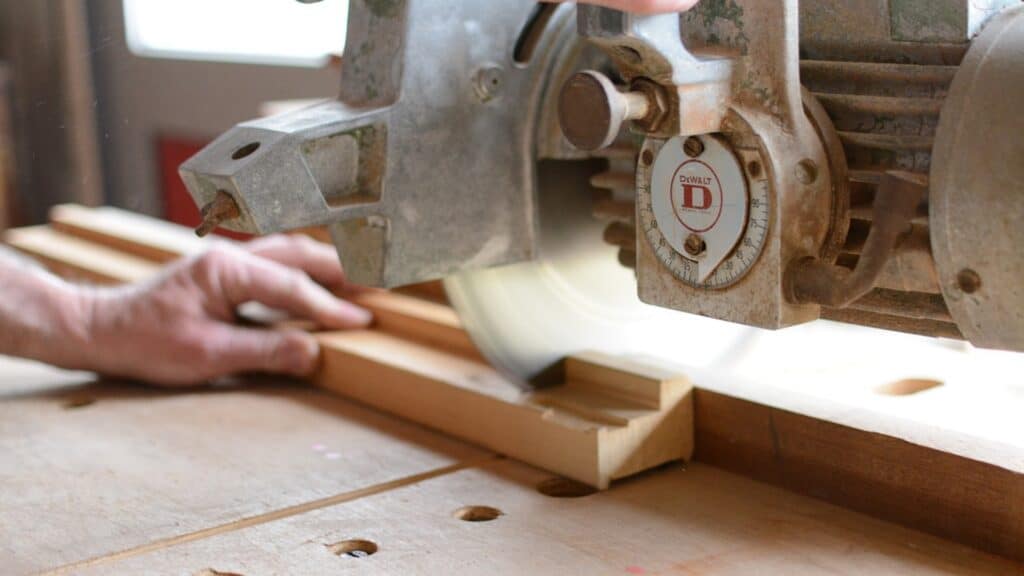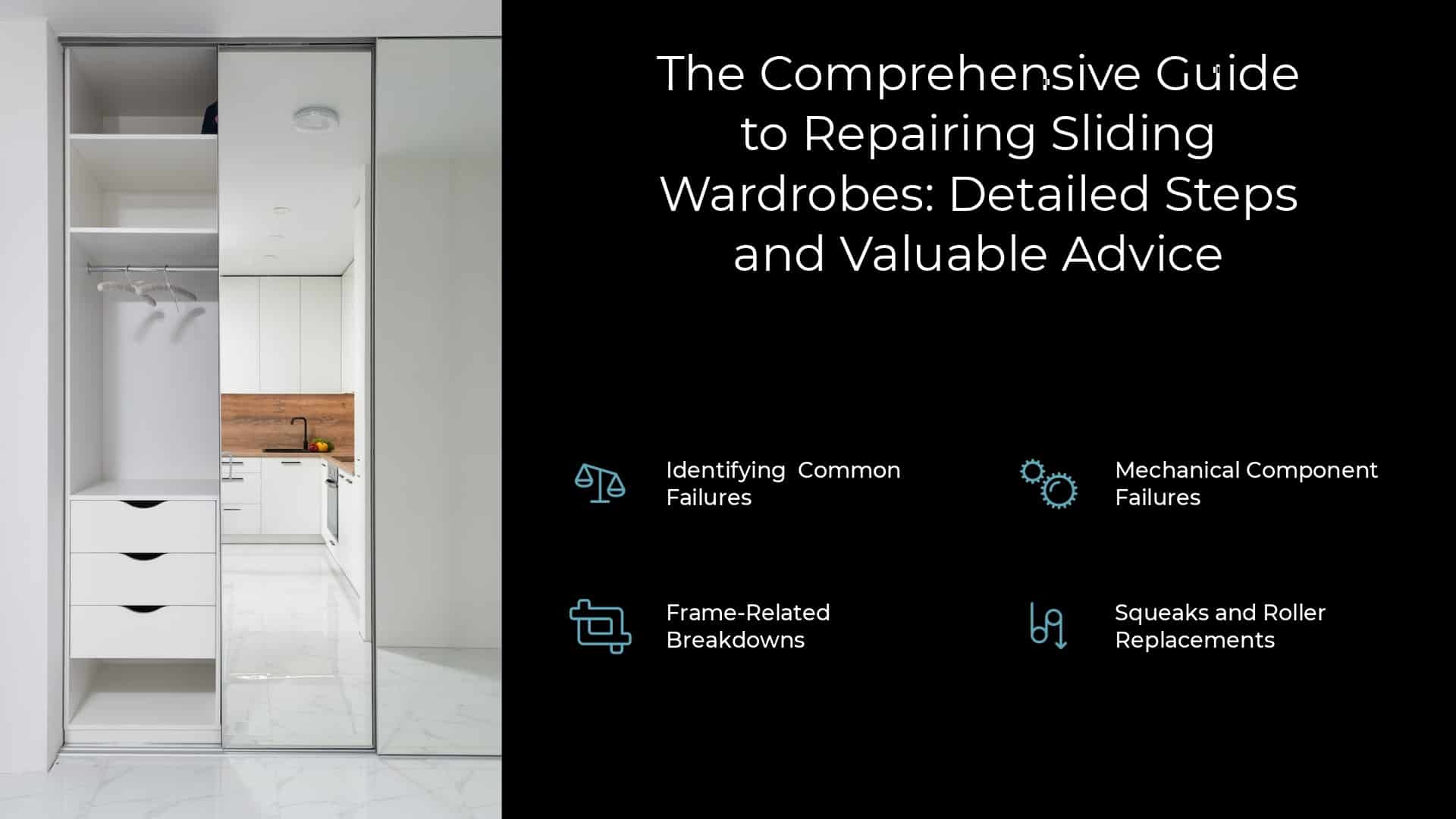Last Updated on May 24, 2023 by Pro Handyman Editorial Team
Wardrobes, particularly sliding variants, are an integral part of modern homes, thanks to their stylish appeal and practical functionality. Nonetheless, these fixtures may require occasional repairs due to various factors. This comprehensive guide provides the information you need to address these problems, enabling you to maintain the longevity of your sliding wardrobes.
Unraveling the Anatomy of a Sliding Wardrobe
Before diving into the repair process, let’s get acquainted with the fundamental components of a sliding wardrobe. The ability to recognize and understand these elements is vital for effective troubleshooting and repair.
Identifying and Troubleshooting Common Failures
The path to effective repair starts with identifying the source of the problem. Here are the common issues you may face and the solutions for each.

Frame-Related Breakdowns
When it comes to frame-related issues, a common culprit is often the appearance of scratches on the shelves or elsewhere on the structure.
Moreover, internal accessories or fittings may deteriorate over time, necessitating replacement. For instance, mirror replacements are frequently needed in the case of mirror-finished wardrobes.
Mechanical Component Failures
Mechanical failures mostly involve damage to the guide rails, rollers, or hinges. Here are a few steps to follow when confronting these issues:
- Dirty Grooves in Guide Rails: If the wardrobe doors aren’t gliding smoothly, the guide rails might be clogged. To solve this, clean the groove using a medium-hard cloth, optionally dipped in a soapy solution.
- Improper Guide Rail Installation: Misaligned guide rails can make the doors fall off track. This requires dismantling the doors and reinstalling the guide rails correctly.
- Loose Door Closure: If the doors are not closing tightly, inspect the wardrobe’s contents. If the problem persists, inspect the door stopper for any damage or misalignment. Apply a resilient glue to reposition the stopper securely.
- Roller Maladjustment: If the doors of your three-door wardrobe are misaligned, adjusting the rollers might solve the issue. Rotate the adjustment screw clockwise to eliminate a gap at the bottom, and counterclockwise to rectify a gap at the top.
Handling Squeaks and Roller Replacements
If your wardrobe door makes a squeaking noise, it’s likely due to a bent roller. While lubrication may offer a temporary fix, a lasting solution involves replacing the faulty roller. Here are the steps for a typical roller replacement

Examining the Sliding Closet Door: The Initial Step
Before embarking on any repair procedure, make sure nothing obstructs your sliding closet door. While it might seem like a simplistic step, it’s surprising how often items get lodged behind doors. Secondly, ensure you’re dealing with a sliding or bifold closet door, not a pocket door, which slides into a wall. This guide is exclusively for sliding and bifold closet door repairs.
Step 1: Replacing Damaged Roller Wheels
The wheels bear the brunt of the door’s weight, and over time, they can wear down or become distorted. First, remove the door from its track to inspect the wheels for any signs of damage. If they’re merely bent, you can try adjusting them back into position. If they’re significantly damaged, however, they need replacement. You can purchase a replacement kit from a local hardware store.
Step 2: Inspecting the Track
If your door’s wheels are in good condition, then the track might be the problem. Over time, tracks can accumulate dirt, debris, or suffer from wear and tear, disrupting smooth movement. Inspect the entire length of the track with the door removed, looking for signs of damage or obstruction. If you identify any dirt or debris, use a rag to clean the entire track or use a vacuum for a more thorough cleanup.
Step 3: Replacing the Track
If your track is damaged, you’ll need to replace it. Start by measuring the current track’s length. You can purchase a new track at a local hardware store or online. To replace the track, remove the screws holding the old track to the door frame. Install the new track in its place and secure it with screws.
Step 4: Checking the Doors for Warping or Damage
Should all previous troubleshooting steps fail, the door slab could be the issue. Doors may warp over time, especially under exposure to moisture. Lay the doors flat and inspect for any irregularities. If you identify any, the door will need replacement. Standard size closet door slabs are readily available at home improvement stores and do not require special preparation.
Step 5: Reattaching the Door
With a new track in place and a door in good condition, you’re ready to reattach your sliding door. With the right conditions, this process should be straightforward and efficient.

Step 6: Lubricating the Tracks
For smooth operation, lubricate the tracks using a product such as WD-40. Ensure your tracks are clean before applying the lubricant to avoid attracting dirt and causing clogs. After applying the lubricant, allow it to dry before testing the door’s movement.
Final Thoughts:
While this guide provides a detailed process for repairing common issues with wardrobe door repair, regular maintenance is the key to ensuring longevity and seamless operation of your wardrobe. By regularly cleaning guide rails, checking mechanical components, and ensuring that the doors are well-aligned, you can minimize the need for frequent repairs.
Sliding wardrobes are a valuable addition to any room, offering a stylish and practical solution for storage. Understanding how to troubleshoot and wardrobe common problems empowers you to keep your wardrobe in excellent condition, ensuring it remains an aesthetic and functional centerpiece for years to come.
